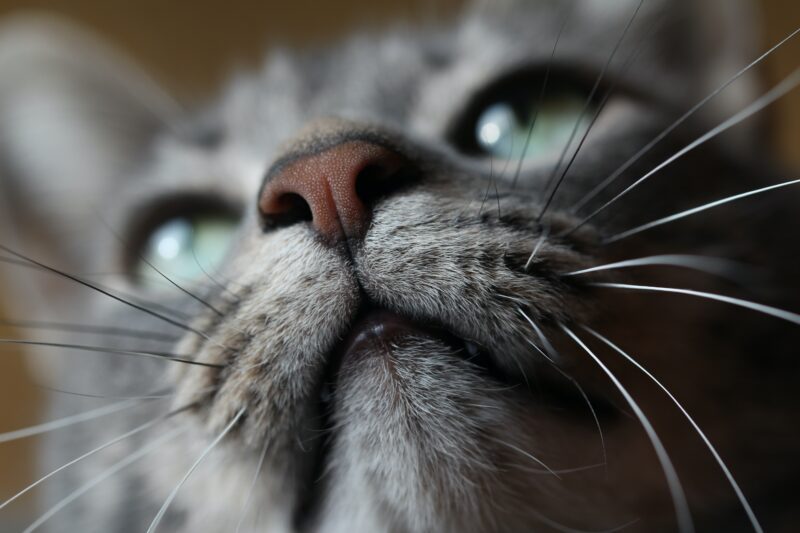As a devoted cat owner, understanding your feline friend’s dietary needs is paramount to ensuring their well-being. Food allergies in cats are not uncommon, and recognizing the signs, seeking proper diagnosis, and implementing dietary solutions are crucial steps in providing optimal care. In this comprehensive guide, we will delve into the common symptoms of food allergies in cats, explore the diagnostic process, and offer guidance on selecting hypoallergenic cat food and creating an elimination diet for your furry companion.
Section 1: Recognizing Signs of Food Allergies in Cats

Cats, like humans, can develop allergies to certain foods, leading to a range of symptoms that may be subtle or easily mistaken for other health issues. Recognizing these signs is the first step in identifying a potential food allergy in your cat.
1.1. Digestive Upset:
- Chronic diarrhea or vomiting may indicate a food allergy.
- Observe changes in stool consistency, frequency, or the presence of mucus or blood.
1.2. Skin Issues:
- Itchy skin, excessive scratching, or the development of skin rashes are common signs.
- Pay attention to any redness, swelling, or lesions on your cat’s skin.
1.3. Ear Infections:
- Food allergies can manifest as recurring ear infections.
- Watch for signs such as head shaking, scratching at the ears, or discharge.
1.4. Respiratory Symptoms:
- Cats may exhibit sneezing, coughing, or wheezing in response to food allergies.
- Respiratory symptoms can sometimes be indicative of an allergic reaction.
1.5. Behavioral Changes:
- Food allergies can affect a cat’s behavior, leading to increased irritability or lethargy.
- Monitor changes in activity levels, social interactions, and overall mood.
Section 2: Diagnostic Steps for Cat Food Allergies
If you suspect your cat may have a food allergy, seeking a proper diagnosis is essential for effective management. Diagnostic steps typically involve working closely with your veterinarian to rule out other potential causes and identify the specific allergens triggering your cat’s symptoms.
2.1. Veterinary Examination:
- Schedule a thorough examination with your veterinarian to discuss your cat’s symptoms and medical history.
- Rule out other potential health issues that may present similar symptoms.
2.2. Food Elimination Trial:
- Conduct a food elimination trial under the guidance of your veterinarian.
- This involves removing potential allergens from your cat’s diet and reintroducing them systematically to identify the specific trigger.
2.3. Allergy Testing:
- In some cases, your veterinarian may recommend allergy testing, such as blood tests or skin tests.
- These tests can help identify specific allergens, aiding in the creation of a targeted elimination diet.
2.4. Diagnostic Diet:
- Your veterinarian may prescribe a hypoallergenic diagnostic diet.
- This specialized diet typically consists of novel protein and carbohydrate sources that your cat hasn’t been exposed to before.
Section 3: Selecting Hypoallergenic Cat Food

Once a food allergy is diagnosed, transitioning your cat to a hypoallergenic diet is a key component of managing their condition. Hypoallergenic cat food is formulated to minimize the risk of triggering allergic reactions and is often recommended as a long-term solution.
3.1. Novel Protein Sources:
- Hypoallergenic cat foods often feature novel protein sources, such as duck, rabbit, or venison.
- These proteins are less likely to have been encountered by your cat, reducing the risk of an allergic response.
3.2. Limited Ingredient Formulas:
- Opt for cat foods with limited ingredients to minimize exposure to potential allergens.
- Limited ingredient diets typically contain a small number of carefully selected ingredients.
3.3. Grain-Free Options:
- Some hypoallergenic cat foods are grain-free, catering to cats with grain sensitivities.
- Grain-free options can be beneficial for cats prone to allergic reactions related to grain consumption.
3.4. Prescription Diets:
- In severe cases, your veterinarian may recommend prescription hypoallergenic diets.
- These diets are formulated to address specific dietary needs and are available by prescription.
Section 4: Implementing an Elimination Diet
An elimination diet is a systematic approach to identifying specific food allergens affecting your cat. This process involves removing potential triggers from your cat’s diet and reintroducing them one by one to observe their response.
4.1. Consult with Your Veterinarian:
- Before starting an elimination diet, consult with your veterinarian to create a plan tailored to your cat’s needs.
- Discuss the duration of the elimination diet and the specific foods to be eliminated.
4.2. Choose a Novel Protein Source:
- Select a novel protein source that your cat has not consumed before.
- Common choices include novel meats like rabbit, venison, or novel fish.
4.3. Eliminate Potential Allergens:
- Remove all potential allergens from your cat’s diet, including treats, flavored medications, and table scraps.
- Stick to the prescribed diet during the elimination phase.
4.4. Monitor for Changes:
- Observe your cat closely for any changes in symptoms during the elimination period.
- Document any improvements or worsening of symptoms.
4.5. Systematic Reintroduction:
- Introduce one potential allergen at a time, allowing a sufficient period between reintroductions.
- Monitor your cat’s response to each reintroduced ingredient.
Conclusion:
Understanding and managing food allergies in cats is a journey that requires diligence and collaboration with your veterinarian. By recognizing the signs, seeking a proper diagnosis, and implementing dietary solutions such as hypoallergenic cat food and elimination diets, you can significantly improve the quality of life for your feline companion. Always consult with your veterinarian for personalized advice tailored to your cat’s specific needs. With the right approach, you can help your cat thrive and enjoy a happy, allergy-free life.


